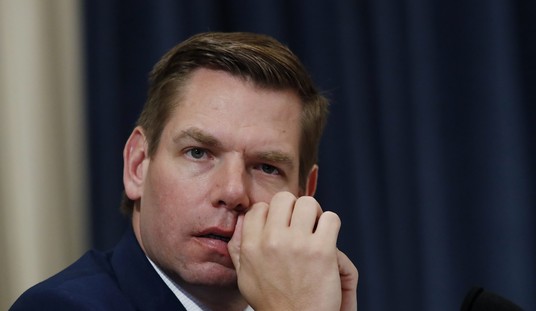Spain did increase its installed wind power capacity to 10% of its total electricity, although actual energy output is 10-30% of this, or 1-3% of total electricity, because the wind is intermittent and unreliable. However, Spain spent $3.7 billion on the program in 2007 alone, according to King Juan Carlos University economics professor Gabriel Calzada.
It created 50,000 jobs, mostly installing wind turbines, at $73,000 in annual subsidies per job – and 10,000 of these jobs have already been terminated. Spain’s economic problems have slashed the subsidies and put the remaining 40,000 jobs at risk.
Meanwhile, soaring prices for subsidized wind energy and carbon dioxide emission permits raised electricity prices for other businesses – causing 2.2 jobs to be lost for every “green” job created, says Calzada. Spain’s unemployment rate is now 17% and rising. That’s hardly the “success” story so often cited by Congress and the Obama Administration.
Across the Channel, Britain’s biggest wind-energy projects are in trouble. Just as the UK government announced its goal of creating 400,000 eco-jobs by 2015, a major green energy employers is ending production. All 7,000 turbines that Downing Street just committed to installing over the next decade will be manufactured – not in Britain, but in Germany, Denmark and China.
For businesses, existing global warming policies have added 21% to industrial electricity bills since 2001, and this will rise to 55% by 2020, the UK government admits. Its latest renewable energy strategy will add another 15% – meaning the total impact on British industry will likely be a prohibitive 70% cost increase over two decades. This is the result of the government’s plans to cut carbon dioxide emissions 34% below 1990 levels by 2020, and increase the share of renewables, especially wind, from 6% to 31% of Britain’s electricity.
Recommended
These cost hikes could make British manufacturers uncompetitive, and send thousands more jobs overseas, the Energy Intensive Users Group reports. English steel mills could become “unable to compete globally, even at current domestic energy prices,” says British journalist Dominic Lawson; “but deliberately to make them uncompetitive is industrial vandalism – and even madness … a futile gesture ... and immoral.”
On this side of the pond, President Obama and anti-hydrocarbon members of Congress are promoting “green” energy and jobs, via new mandates, standards, tax breaks and subsidies. However, the United States would need 180,000 1.5-megawatt wind turbines by 2020, just to generate the 600 billion kilowatt-hours of electricity that compliance with the narrowly passed Waxman-Markey global warming bill would necessitate, retired energy and nuclear engineering professor James Rust calculates.
This would require millions of acres of scenic, habitat and agricultural lands, and 126 million tons of concrete, steel, fiberglass and “rare earth” minerals for the turbines, at 700 tons per turbine; prodigious quantities of concrete, steel, copper and land for new transmission lines; and still more land, fuel and raw materials for backup gas-fired generators. America’s new national forests will apparently be made of concrete and steel.
Those miners and drillers would likely be reclassified as “green” workers, because of the intended purpose of their output. However, the raw materials will probably not be produced in the States, because so many lands, prospects and deposits are off limits to mining, quarrying and drilling – and NIMBY litigation will further hamper resource extraction.
Air quality laws and skyrocketing energy costs (due to climate taxes and expensive renewable energy mandates) will make wind turbine (and solar panel) manufacturing in the USA improbable. Thus, manufacturing could well be in China or India, and most “green” jobs could be for installers, as Spain discovered.
Posturing has already collided with reality in Texas, the nation’s wind energy capital. Austin’s GreenChoice program is struggling to find buyers for electricity generated entirely from wind and solar power. Its latest sales scheme has been a massive flop: after seven months, 99% of its recent electricity offering remains unsold.
Austin officials admit that “times have changed,” and the recession and falling energy prices may make it impossible for the city to meet its lofty goals. The company’s renewable electricity now costs almost three times more than standard electricity, and even eco-conscious consumers care more about the color of their money than the hue of their purported ideology.
Even worse for global warming alarmists and renewable energy advocates and rent seekers, global warming patterns have reversed during the past decade. Satellite data reveal that the planet is cooling, despite steadily rising carbon dioxide levels, and summertime low temperature records are being broken all over the United States.
“You'd better hope global warming is caused by manmade CO2 if you're investing in [renewable] sectors,” says Daniel Rice, the past decade’s best-performing US equity fund manager (BlackRock Energy and Resources Fund). But evidence for manmade catastrophic global warming is dissipating faster than carbon dioxide from an open soda bottle on a hot summer day.
The crucial fact remains: wind and solar are simply not economical without major government subsidies or monstrous carbon taxes. Moreover, cap-and-tax legislation currently being promoted in the House and Senate is “not enough to do anything” about supposed global warming disasters notes Rice.
“All it does is provide Obama a pass to Copenhagen,” where the UN will host a climate change conference in December, Rice says. And those subsidies and taxes would drive energy prices still higher, killing jobs and skyrocketing the cost of everything we eat, drive, heat, cool, grow, make and do.
Many words could describe renewable energy. “Sustainable” … “affordable” … “eco-friendly” … and “socially responsible” do not spring readily to mind.
The slick wind turbine ads waste paper, ink airtime and money, promoting costly, unreliable technologies. Companies buying them hope to pressure Congress for new mandates, standards, tax breaks and subsidies. They want to silence opponents long enough to get the legislation enacted, before Americans realize what it will cost them in dollars, jobs, living standards and liberties.
___________ Paul Driessen is senior policy advisor for the Committee For A Constructive Tomorrow and Congress of Racial Equality, and author of Eco-Imperialism: Green Power • Black Death.
























Join the conversation as a VIP Member